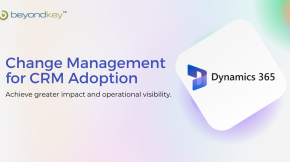What Is Vulnerability Assessment? Benefits & Tools
In a world where tech advancements have gained all the talk, vulnerability has begun to make its way rapidly. Cybersecurity has become a matter of concern in the business world, where checking vulnerabilities is important. If we look into the stats, businesses faced 50% more cyber attack attempts per week in 2021, with only 14% able to fend off. While the numbers paint a grim picture, there are ways to overcome this serious issue through industry-oriented practices. But before that, you need to know what vulnerability is and what makes your cyber system vulnerable.
Any flaw in an organization’s internal controls, system procedures, or information systems is a vulnerability in cyber security. Cybercriminals or attackers may target these vulnerabilities and exploit them by invading the points of vulnerability. They can get into networks without authorization and seriously harm user privacy. As a result, it is crucial to constantly check for vulnerabilities in cyber security, as even a minor flaw in a network might lead to a complete compromise of an organization’s systems. And this is where vulnerability assessment comes in handy.
What is Vulnerability Assessment?
The process of locating, categorizing, and ranking security flaws in IT infrastructure is known as vulnerability assessment. A thorough vulnerability assessment determines if an IT system is vulnerable to known vulnerabilities, rates the severity of vulnerabilities found, and, as necessary, suggests remedy or mitigation measures.
To better safeguard sensitive data and information technology from cyber-attacks, vulnerability assessments are a typical security technique. They give a complete insight into the security risks that an organization may encounter.
But do we need a dedicated testing process for this? Can’t the IT guy take care of these delicate technicalities? This is one of the most common questions any organization asks, and the answer is a solid YES.
Threat actors are constantly searching your networks for unprotected ports, weak passwords, and vulnerabilities that haven’t been fixed. To successfully fend off hacker attacks, organizations should conduct vulnerability testing regularly.
Furthermore, vulnerability testing helps in
- Spotting weaknesses before hackers do so.
- Demonstrate your systems’ security to your clients, potential clients, and other stakeholders.
- Assessing the effectiveness of outside IT service providers.
- Observing statutory and industry requirements.
- Saving money and time to avoid time-consuming and costly data breach lawsuits.
Now that you understand the significance of Vulnerability assessments and their impact on your cyber security, you need to know their different types, as vulnerability assessments are not one-fit-for-all assessments.
Types of Vulnerability Assessment
Wireless Testing
Wireless testing refers to the type of vulnerability testing where the security and usability of your present wireless system are directly impacted by several environmental, architectural, and configuration factors seen during wireless assessments. This includes examining each of your wireless access points as well as their placement in your surroundings.
Build Testing
Malware and hackers frequently search for security flaws or vulnerabilities that they might exploit to get into the system. Examining software or application builds for any performance or security flaws is known as build testing. Later on, these security flaws can make the program less effective.
Web Application Testing
This assessment performs dynamic or static code analysis or front-end automated scanning to find security flaws. Web application testing is required for cloud-based and internet applications. Web application scanners concentrate on the executing code of the program, whereas network vulnerability scanners examine the web server and its operating systems.
Host-based Testing
Host-based vulnerability assessment offers a thorough understanding of potential internal and external risk exposure and its effects on a company’s operations. It is an assessment that thoroughly studies systems, vulnerability analysis, and networks to spot security flaws that must be fixed.
Database Testing
The Database Security Assessment evaluates databases like Oracle, Microsoft SQL, MySQL, Postgres, etc., to find flaws or vulnerabilities. The first component of risk is determined by assessing a database’s sensitivity to a number of known vulnerabilities and attack scenarios.
Exploring Vulnerability Assessment Testing Advantages
Organizations must be on the offensive to keep ahead of threats and on the defensive to safeguard their network if they want to lower risk. Checking a box to satisfy an audit just serves as an open invitation for an assault with potentially devastating outcomes. Regular vulnerability assessment testing will help organizations identify unknown threats before they reach the attackers.
Why organizations/brands should invest in a vulnerability assessment service:
- Quantifiable metrics: Regular vulnerability assessment services offer quantitative metrics that define the risk level of your vulnerability programs, which is one of their main advantages. Your teams may create plans to fix and repair systems before they can be exploited using this knowledge.
- Improves overall security: When you choose a vulnerability assessment service, you ensure your organization’s security. Your teams can correctly allocate resources, react swiftly to threats, and reduce technological debt with a standardized methodology for identifying and fixing vulnerabilities.
- Enhances credibility: Organizations that take security seriously are likelier to partner with prospective clients and consumers. Profits and revenue may rise as a result of this.
Planning a refined and regular vulnerability assessment and investing in vulnerability assessment tools help prevent short-term and long-term vulnerability management benefits that could secure your software and other programs.
Vulnerability Assessment Methodology or Process
A vulnerability assessment process involves four steps:
Vulnerability identification: The very first step towards creating a vulnerability assessment is understanding the entire ecosystem and knowing the most critical systems. To do this, you can use automated tools to search the target system for vulnerabilities automatically.
Vulnerability analysis: The evaluation reveals a prioritized list of vulnerabilities and security flaws. You should analyze which services are at risk, which networks are affected, and what could be the possible compromises.
Risk assessment: In the risk assessment process, you can create a Vulnerability assessment focused on detection and reporting rather than actively exploiting vulnerabilities.
Remedial Recommendations: The assessment’s findings frequently include mitigation and remedial suggestions. The system’s security posture is reevaluated at this phase, utilizing comparable approaches to those used for the original evaluation, which may include vulnerability scanning, penetration testing, code reviews, and other pertinent procedures. But now, the emphasis is on establishing if the previously discovered vulnerabilities have been properly mitigated or lowered to an acceptable degree.
For further information, you can always refer to a detailed guide on Vulnerability Management Processes. The internet has scores of articles on this topic to guide you.
How To Choose The Right Vulnerability Assessment Service
The market for vulnerability management solutions is established with a wide selection of high-quality products to help security professionals with duties like threat identification and remediation. You should cast a wide net when evaluating solutions for your organization, then choose a number of different goods to test in a real-world setting.
Check for these pointers before choosing a vulnerability assessment service:
Timely updates, speed, and quality: Ensure the vendor publishes updates to address vulnerabilities. Do they identify vulnerabilities with any accuracy? Selecting a recent, well-known vulnerability and examining the interval between the announcement of the vulnerability and the vendor’s release of a signature are two ways to help with this stage of the evaluation process.
Relationship with your organization: Does the product’s signature database cover each of your environment’s primary apps, operating systems, and infrastructure parts?
Cloud services: Check if the vendor uses any tools for Infrastructure as a Service, Platform as a Service or Software as a Service and if the service could identify problems with setups in the environments.
Prioritization: What data is considered by the product’s algorithm for prioritization? Does it have a combination of automatic prioritization and human setup that enables you to achieve your objectives effectively?
Detection methods: Does the solution combine conventional active system scanning and passive vulnerability identification based on network traffic observation?
Scanning Methods: Can you deploy an agent on computers in your organization using the product to carry out authorized scans that reduce false positive rates?
Before choosing a vulnerability service, consider factors like remediation guidance and vendor support to ensure you put your faith and money in the right place.
Organizations willing to secure themselves from potential threats and safeguard their interests should invest in VAPT services. Being proactive may help businesses secure their data and gain the trust of their customers and partners. That will guarantee that their companies continue to turn a profit.
VAPT services can help organizations identify vulnerabilities in the network and apps and help prevent data breaches and cyber-attacks, which might cause a lot of trouble. It’s important to select a reliable and competent partner when picking a VAPT provider so they can help you keep up a solid cybersecurity posture and continue protecting your business from cyberattacks.
If you are willing to adopt vulnerability testing and penetration testing, it’s time to choose vulnerability assessment services that offer extensive experience in vulnerability assessment. Choosing a service that ensures vast tools and guidance options will help you stay at the top of the potential security threats. So what are you waiting for? It’s time to onboard a vulnerability assessment service that tracks the entire vulnerability process from inception to implementation.












